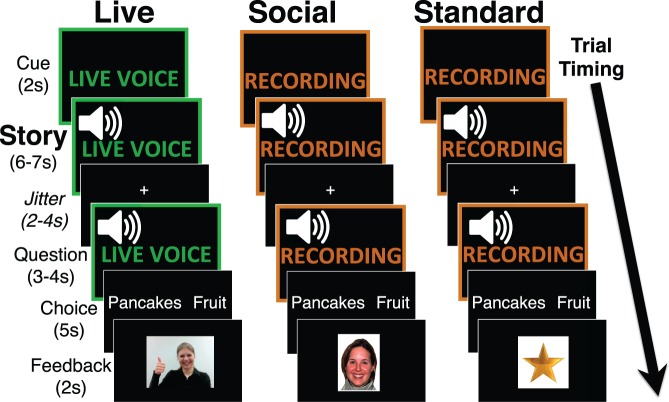Fig. 1.
Experimental trial structure. Each of the three conditions (Live, Social, Standard) is represented in a column. Children believed that the Live condition was presented via a real-time audio-feed by an experimenter who could see their answers and that the other two conditions were recorded. In each trial, after the Cue screen, children heard a two-sentence Story that presented two options with no mention of social information (e.g. ‘There are two things on the breakfast menu. One is pancakes and one is a bowl of fruit.’). After this Story, children heard a question, either about the Live speaker or, for the Social and Standard conditions, about a third-party character (‘I/Megan am/is trying to eat healthy. Which food should I/she eat?’). After answering the question, children saw feedback dependent on their answer. Analyses focused on the matched Story portion. s, seconds.

